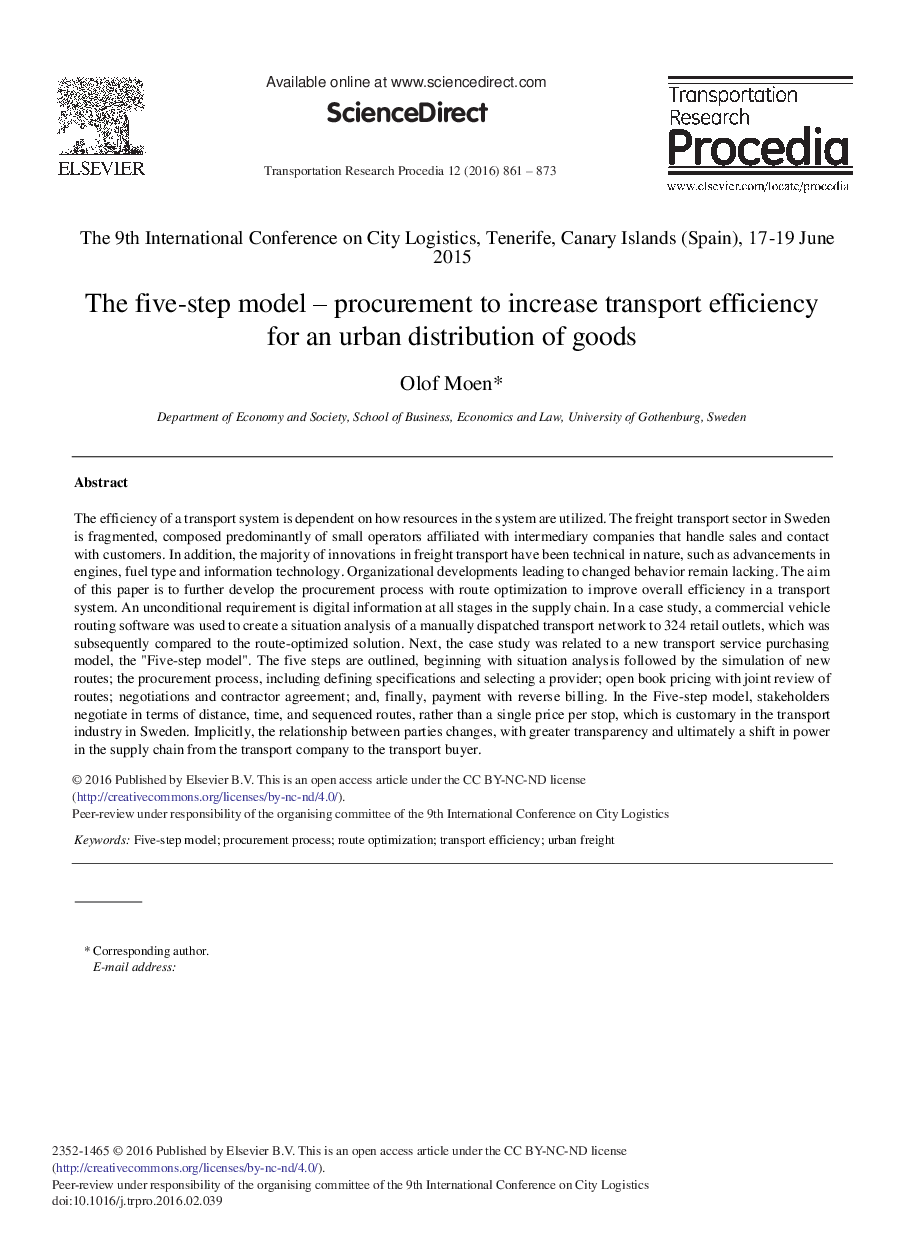| Article ID | Journal | Published Year | Pages | File Type |
|---|---|---|---|---|
| 1106647 | Transportation Research Procedia | 2016 | 13 Pages |
The efficiency of a transport system is dependent on how resources in the system are utilized. The freight transport sector in Sweden is fragmented, composed predominantly of small operators affiliated with intermediary companies that handle sales and contact with customers. In addition, the majority of innovations in freight transport have been technical in nature, such as advancements in engines, fuel type and information technology. Organizational developments leading to changed behavior remain lacking. The aim of this paper is to further develop the procurement process with route optimization to improve overall efficiency in a transport system. An unconditional requirement is digital information at all stages in the supply chain. In a case study, a commercial vehicle routing software was used to create a situation analysis of a manually dispatched transport network to 324 retail outlets, which was subsequently compared to the route-optimized solution. Next, the case study was related to a new transport service purchasing model, the “Five-step model”. The five steps are outlined, beginning with situation analysis followed by the simulation of new routes; the procurement process, including defining specifications and selecting a provider; open book pricing with joint review of routes; negotiations and contractor agreement; and, finally, payment with reverse billing. In the Five-step model, stakeholders negotiate in terms of distance, time, and sequenced routes, rather than a single price per stop, which is customary in the transport industry in Sweden. Implicitly, the relationship between parties changes, with greater transparency and ultimately a shift in power in the supply chain from the transport company to the transport buyer.
